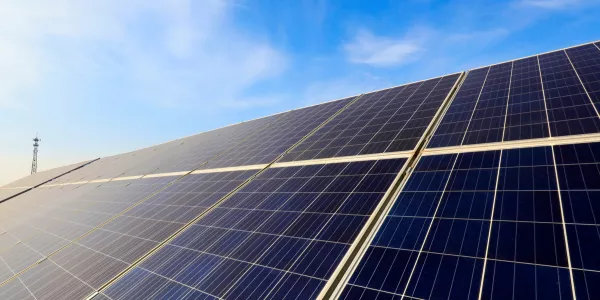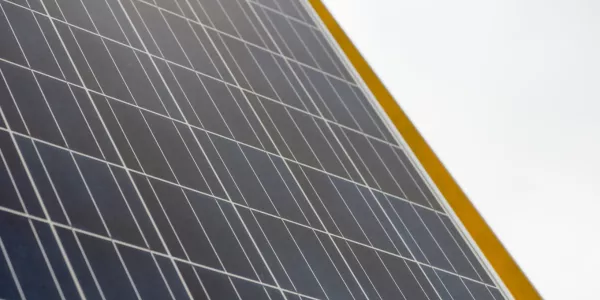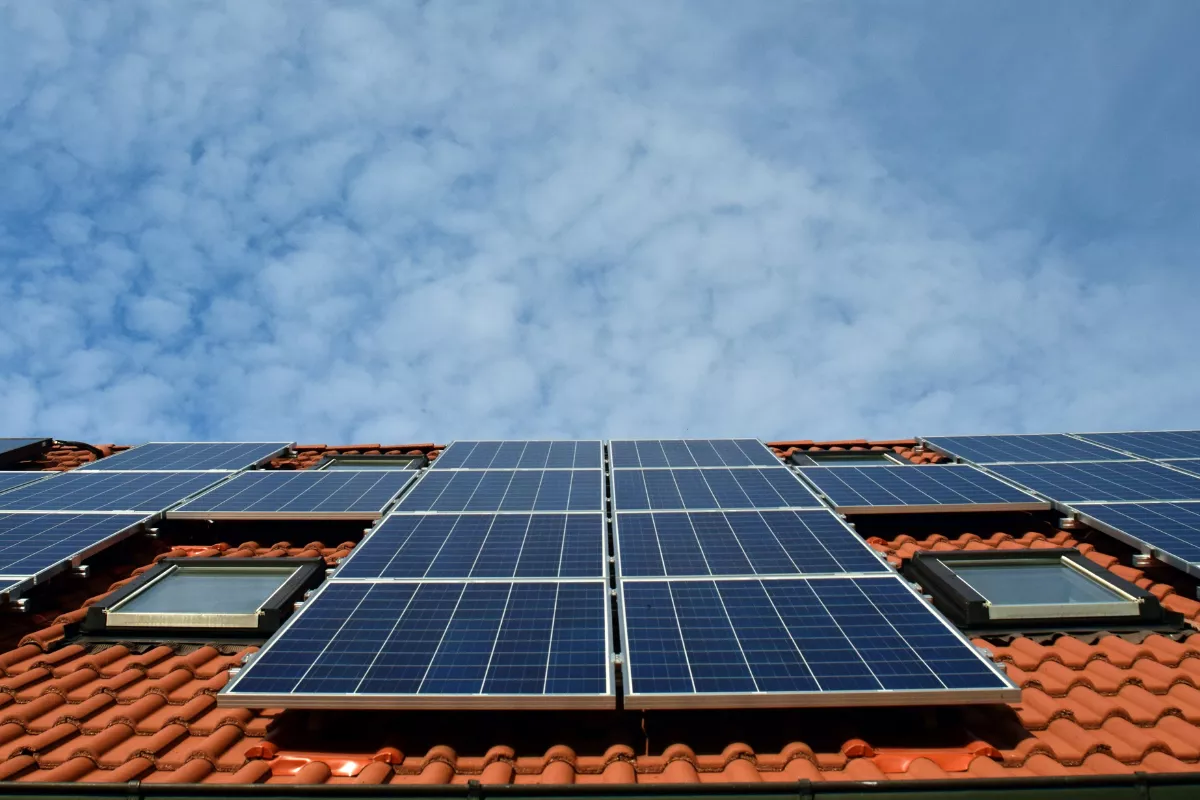Harnessing the sun's power isn't a new idea, but recent advancements in technology and the increased accessibility of solar panels have marked a significant evolution in this field. From their basic operational principles to more advanced, they have emerged with various types, and converted to practical use in residential settings.
But all of us still have some questions, such as "What is the lifespan of solar panels?”, “I know they have numerous advantages, but what about the drawbacks”, and “how is their adaptability to different environments.”
Understanding Solar Panels: How Do They Work?
Remarkably, the sunlight that reaches Earth in just an hour and a half is enough to satisfy the entire world's energy needs for a year. Solar technologies harness this abundant natural resource, transforming sunlight into electrical energy through two main methods: photovoltaic (PV) panels and mirrors that concentrate solar rays.
PV panels, made of semiconductor materials like silicon, absorb sunlight and release electrons, creating a flow of electrons that generates a direct current (DC). This DC is then converted into alternating current (AC) by an inverter, providing power for homes and businesses.
The efficiency of these solar panels has seen significant improvements, positioning them as a viable energy source globally. The energy produced can be directly used to generate electricity or stored in batteries or thermal storage systems for future use.
The Journey of Solar Panels: A Brief History
The narrative of solar energy unfolds over more than a century, tracing its origins back to the 19th century when it was first utilized for generating steam to power machinery. The pivotal moment came with Edmond Becquerel's discovery of the "photovoltaic effect," which laid the groundwork for transforming sunlight into electrical energy.
This breakthrough inspired Charles Fritts in 1893 to develop what could be considered the precursor to modern solar cells by coating selenium sheets with a thin gold layer. However, it wasn't until 1954 that the solar energy landscape saw a monumental shift with Bell Labs in the U.S. creating the first practical silicon solar cell, a development attributed to Russel Ohl, an inventor at Bell Laboratories.
This innovation not only marked the advent of the solar panel but also catalyzed significant enhancements in the efficiency, affordability, and availability of solar panels, leading to their widespread adoption as a sustainable energy source worldwide.
The initial use of these solar panels was in powering space satellites, but by the 1970s, they had become commonplace in consumer products like calculators, serving as many people's first encounter with solar technology.
Today, the application of solar panels has vastly expanded, powering not just small gadgets but also entire residential and commercial buildings, such as the Google headquarters in California. This evolution underscores the significant strides made in solar panel technology, making it a cornerstone of renewable energy use around the globe.
The Cost of Solar Power in 2024
On average, the price can range from $15,000 to $30,000 before incentives, but it's essential to get a personalized quote to understand the specific costs and potential savings in your area.
Several factors influence the total cost, including the size of the installation, the type of panels, and regional incentives. The cost of solar panels has decreased significantly over the years, making them a more affordable investment for many homeowners in 2024.
Diverse Types of Solar Panels
Solar panels, the cornerstone of converting sunlight into electricity, are not one-size-fits-all. They come in several varieties, each with unique characteristics, benefits, and best-use scenarios. Here's a deeper dive into the three primary types mentioned: monocrystalline, polycrystalline, and thin-film solar panels.
Monocrystalline Solar Panels

Monocrystalline panels are easily recognizable by their uniform, dark color and rounded edges. They are made from single-crystal silicon, which gives them their distinctive look and high efficiency. The manufacturing process involves cutting cylindrical silicon ingots into wafers, which contributes to their characteristic shape.
These panels are at the top of the market in terms of efficiency, typically ranging from 15% to 20% or higher than others. This high efficiency is due to the purity of the silicon used, which allows for better electron flow. They perform better in low-light conditions compared to their polycrystalline counterparts and have a longer lifespan, often exceeding 25 years with minimal degradation in performance.
The high efficiency and longevity come with a higher price tag, making monocrystalline panels the most expensive among the three types. They're particularly suited for areas with limited space because you can generate more power with fewer panels.
Polycrystalline Solar Panels

Polycrystalline panels, also known as multicrystalline panels, have a speckled blue color and are made from multiple silicon crystals melted together. This process is less wasteful than the one used for monocrystalline panels, as it involves pouring molten silicon into a mold.
While not as efficient as monocrystalline panels, polycrystalline panels still offer a respectable efficiency range of about 13% to 16%. They tend to have a slightly lower heat tolerance, which means they might perform less efficiently in extremely hot temperatures.
These panels are more affordable than monocrystalline options, making them a popular choice for individuals looking for a balance between efficiency and cost. They're well-suited for residential installations where space is not as constrained.
Thin-Film Solar Panels

Thin-film solar panels are known for their lightweight and flexible design. They can be made from a variety of materials, including amorphous silicon, cadmium telluride (CdTe), and copper indium gallium selenide (CIGS). Unlike monocrystalline and polycrystalline panels, thin-film panels are not made from silicon wafers but from depositing photovoltaic material on a substrate.
These panels generally have lower efficiency rates, typically between 10% and 13%. However, they perform better than other types in low-light conditions and high temperatures.
Thin-film panels are the least expensive to manufacture, but they require more space to generate the same amount of power as crystalline silicon panels. They're an excellent choice for large, commercial projects or for surfaces where traditional panels can't be installed due to weight or shape constraints.
Powering a House with Solar Panels
The number of solar panels needed to run a house depends on several factors, including the household's energy consumption, the panels' efficiency, and the available sunlight. On average, a typical American home might require between 20 to 25 panels to cover its energy needs.
However, this number can vary significantly, emphasizing the importance of a customized assessment. Let’s analyze the factors that influence the quantity of panels you should have:
Household Energy Consumption
The first step in determining the number of solar panels needed is to assess the household's energy usage. This is typically measured in kilowatt-hours (kWh) per month or year and can be found on your electricity bills. Homes with high energy consumption due to electric heating, air conditioning, and numerous appliances may require more panels to meet their energy needs.
Panel Efficiency
Solar panel efficiency plays a crucial role in how many panels you'll need. Efficiency refers to the portion of sunlight that can be converted into usable electricity. High-efficiency panels, while more expensive, can generate more electricity from the same amount of sunlight compared to standard panels. Therefore, a system with high-efficiency panels might require fewer panels overall to produce the same amount of power.
Sunlight Availability
The location of your home significantly affects how much sunlight your solar panels will receive, which in turn influences how much electricity they can generate. Homes in sunnier regions like the Southwest U.S. may need fewer panels than those in less sunny areas.
Additionally, shading from trees, buildings, and other obstructions can reduce the effective sunlight reaching your panels, potentially increasing the number of panels needed.
Roof Space and Orientation
The available space on your roof and its orientation toward the sun are also important considerations. Solar panels are most effective when they face south in the Northern Hemisphere. Roofs with limited space or suboptimal orientation may require higher efficiency panels or innovative layouts to maximize energy production.
Energy Goals
Your energy goals will also impact the number of panels you need. If you aim to be entirely off-grid or have a net-zero energy home, you'll likely need more panels compared to someone looking to supplement their energy usage and reduce utility bills.
Running AC on Solar Power
Air conditioning can be one of the most energy-intensive appliances in a home, especially during hot months. Running an AC on solar power is entirely feasible, but it requires a well-designed system with sufficient capacity. It's crucial to consider the AC unit's energy consumption and ensure your solar panel system can accommodate the peak demands, possibly incorporating battery storage for greater efficiency and reliability.
The Lifespan of Solar Panels
Solar panels are built to last, with many manufacturers offering warranties of 25 years or more. The average lifespan of a solar panel is around 25 to 30 years, after which their efficiency may start to decrease. However, many panels continue to operate effectively well beyond their warranty period, making them a long-term investment in sustainable energy.
Weighing the Pros and Cons
Before investing in solar panels, it's important to weigh their potential drawbacks against the numerous advantages they offer. Despite the initial challenges, such as installation costs and suitability concerns, the long-term benefits often outweigh these initial obstacles, promising significant savings and environmental contributions.
Key Considerations
- Location and Installation: The effectiveness of solar panels is heavily dependent on your home's location and the orientation of your roof. Shaded areas or unsuitable roof types may limit the efficiency of solar energy generation. However, alternatives like ground-mounted solar systems offer flexibility for those facing such challenges.
- Weather Dependency: Solar panels require sunlight to operate efficiently. In regions with frequent cloudy weather, this can be a limitation. Modern solutions like solar batteries can mitigate these effects by storing extra energy for use during less sunny periods.
- Investment and Costs: The upfront cost of solar panel installation can be daunting, often exceeding $20,000. Yet, the long-term savings on electricity bills, energy independence, and protection against rising energy costs make it a worthwhile investment. Various incentives, rebates, and tax credits can also help offset the initial expenses.
- Installation Requirements: Professional installation is recommended to ensure safety and optimal performance. While some adept DIY enthusiasts might undertake this task, it generally requires skilled professionals.
Additional Points
- Mobility: If you plan to move soon, consider the implications of transferring your solar panel system. While solar panels increase property value, the process of uninstalling and reinstalling them can be costly and potentially damaging.
- Home Value Increase: Solar panels not only save you money on energy bills but also boost your home's market value, often resulting in a profitable return on your investment when you decide to sell.
People also ask
Can solar panels work on cloudy days?
Indeed, solar panels are capable of functioning during cloudy and rainy conditions, though their efficiency may not reach maximum levels under such circumstances. The degree of cloud cover can significantly influence their performance. Obstacles that impede sunlight from reaching the panels, such as clouds, fog, and tree shade, can diminish their energy output.
Do solar panels need maintenance?
Solar panels typically require upkeep about two to four times annually, though it's wise to consult the maintenance guidelines provided by your solar company for panel-specific advice. Conducting maintenance during the fall and spring is advisable, as these seasons follow the winter months when dust and debris tend to gather on the panels.
Are there incentives for installing solar panels?
Many regions offer incentives such as tax credits, rebates, and net metering policies to encourage solar panel installations.

 Marcio Vasconcelos
Marcio Vasconcelos





